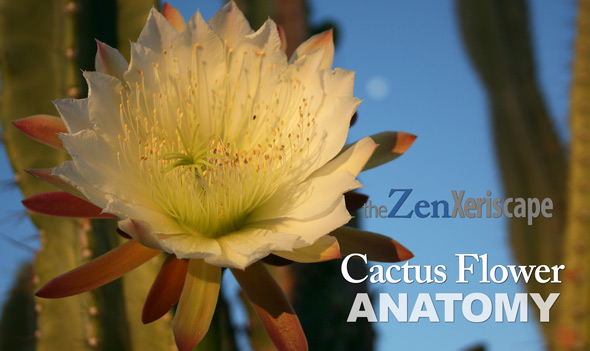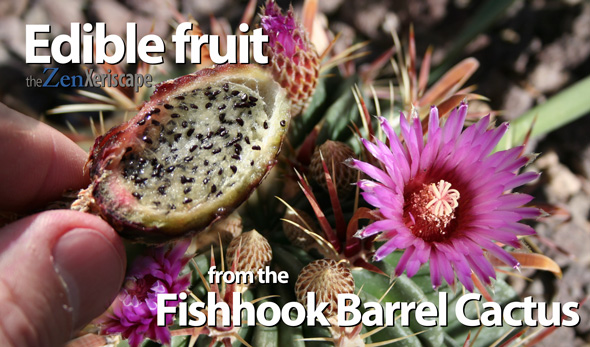If you’d like a unique-looking and easy-to-grow cactus that stays relatively small, I’d suggest the Opuntia quitensis Johnson’s hybrid. Read more about how to grow Opuntia Johnson’s hybrid cactus!
But first, here’s a description of Opuntia Johnson’s hybrid cactus.

is a petite cactus with petite flowers.
Here’s how to grow
Opuntia Johnson’s hybrid.
Description of the Opuntia Johnson’s hybrid cactus
Smaller flowers and smaller pads
Most varieties of opuntia cacti have large, showy flowers, along with plate-size pads or stems. However, the Opuntia quitensis, often sold as the Opuntia quitensis ‘Johnson’s Hybrid’, is a more petite variety.
This variety might also be listed as Opuntia quitensis Johnson’s hybrid. Or, you might also hear this unique cactus called the red buttons opuntia. The ‘red buttons’ refers to the diminutive, but bright, red or orange flowers that appear on the tips of new-growth pads.
The petite flowers have the same structure as other opuntia cactus flowers. The only difference, however, is their smaller size. A blooming flower might be 3/8 of-an-inch high to 5/8 of-an-inch wide.
To make up for their small size, the flowers have a bright, orange-red glow to attract pollinators. Their brilliant hue makes them stand out, even from 30 feet away.
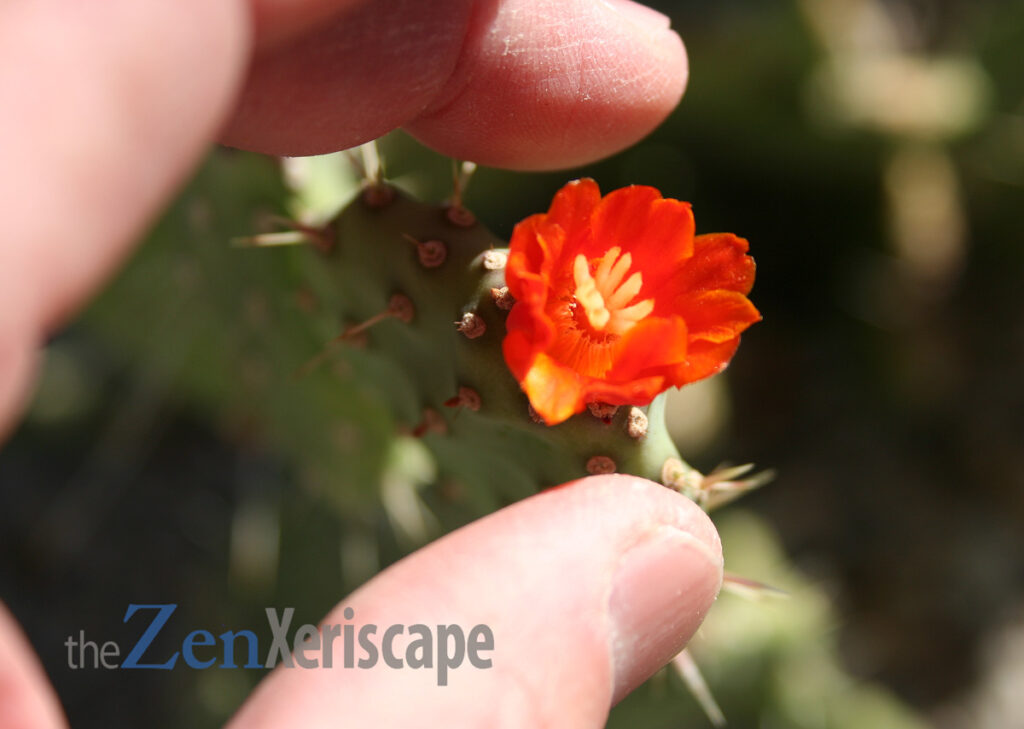
petite and bright, orange-red flowers.
Photo by Doug Martin
Buy soil amendments before planting! (As an Amazon Associate, I earn a commission from qualifying purchases.)
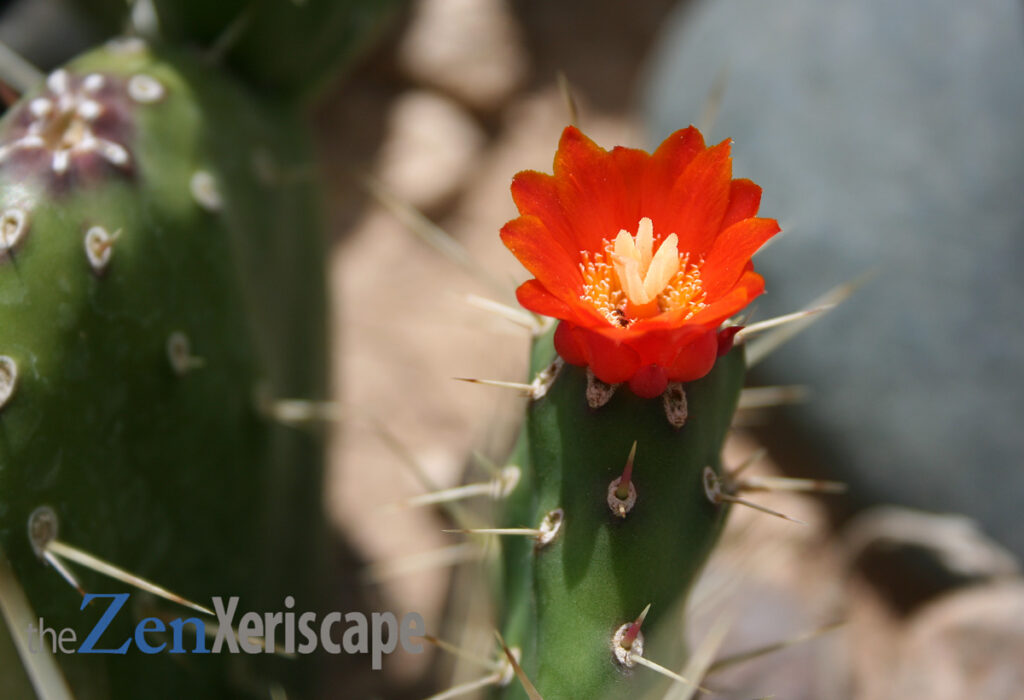
has such a beautiful flower, that it
almost appears to glow from a distance.
Photo by Doug Martin
Petite flowers bloom in spring and fall
Here in southwestern United States, my Johnson’s hybrid opuntia blooms in the fall! It also produces flowers in spring-time and then sporadically throughout the summer. Depending on your climate, you might get flowers at different times of the year.
Pads stay small
The pads or stems of this opuntia variety stay on the small side relative to most opuntia varieties. My red buttons opuntia plants have fully grown pads that range all the way up to 4-to-6 inches.
Pads have an oval shape that are thin when young, but can get thicker with a harder skin as they age.
Sprawls across the ground
This cactus variety usually stays low to the ground, almost like a ground cover. However, the pads also grow up, sometimes to a height of two feet (at the most).
Left unattended, this cactus could spread out across the ground three feet wide (or more), with some stems growing vertically up to one-or-two feet high.
Personally, I like to prune this cactus so it has a more vertical growth habit. If you are growing yours in a container, the vertical growth might work the best.
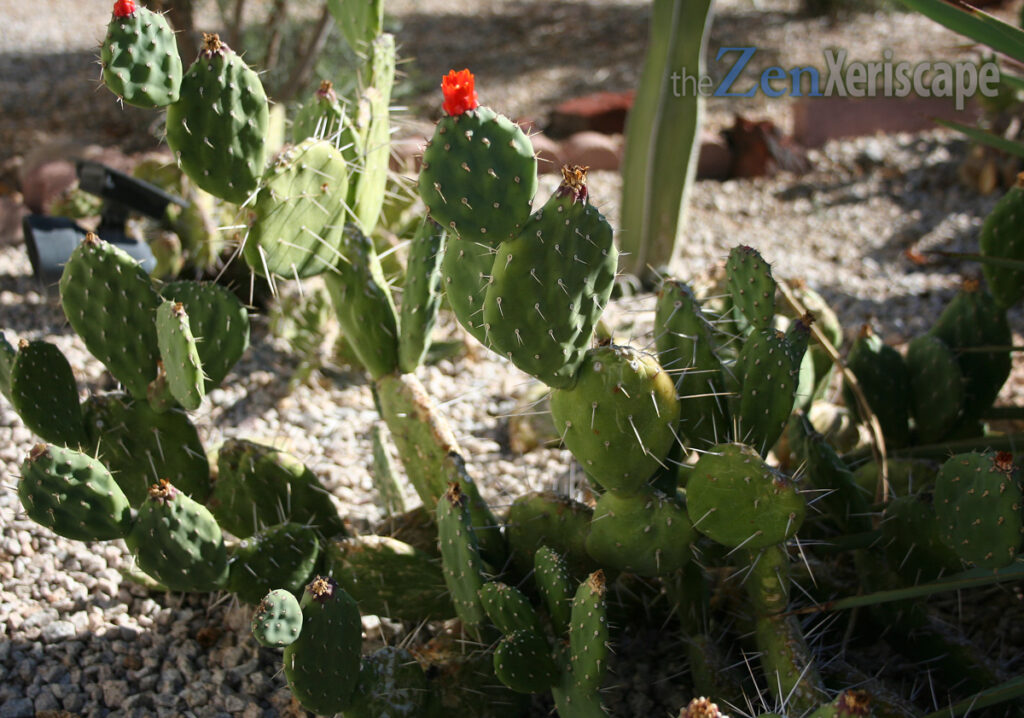
can get a foot-or-two high, and it can
sprawl across the ground for up to
three feet or more.
Photo by Doug Martin
How to grow Opuntia Johnson’s hybrid cactus
Plant in soil that drains well
Just like all cacti and most succulents, plant your opuntia quitensis Johnson’s hybrid in well-draining soil. If you have a clay-based soil, amend with ingredients like pumice, sand, organic garden soil, or ground-up lava rock.
I always buy a pre-mixed soil amendment specifically made for cactus plants from my local DIY store or Amazon. Not only will the specially prepared amendments help your soil drain better, but they also include nutrients to spur growth.
Buy cool water pots for your plants! (As an Amazon Associate, I earn a commission from qualifying purchases.)
Full sun or partial sun is okay
One of my red buttons opuntia cactus grows in almost complete shade. At the most, it gets a few hours of late afternoon sun. Despite the lack of rays, it still grows fast and produces beautiful, small flowers.
This cactus variety also does well in full sun. Here in the Phoenix area, my red buttons can soak up a full day of southwestern sun and heat, and still thrive.
In other words, either partial sun or full sun will work well!
Great cactus for containers
Because this cactus stays on the smaller side, it is a good choice for containers. Then, you can grow them on your window sill, or move it to an outside living space.
Protect from below-freezing temps
This cactus is hardy down to about 30 degrees Fahrenheit. It’s hardy in USDA hardiness zones of 8-to-11. To avoid damage to the cactus pads, protect the plant from frost or below-freezing temperatures.
Drought-tolerant
The Johnson’s hybrid opuntia is drought-tolerant. I only water once a month during the winter in low-altitude Phoenix, Arizona.
However, during the extremely hot summer months this variety appreciates more water more often, like once a week. Allow the soil to completely dry out between waterings.
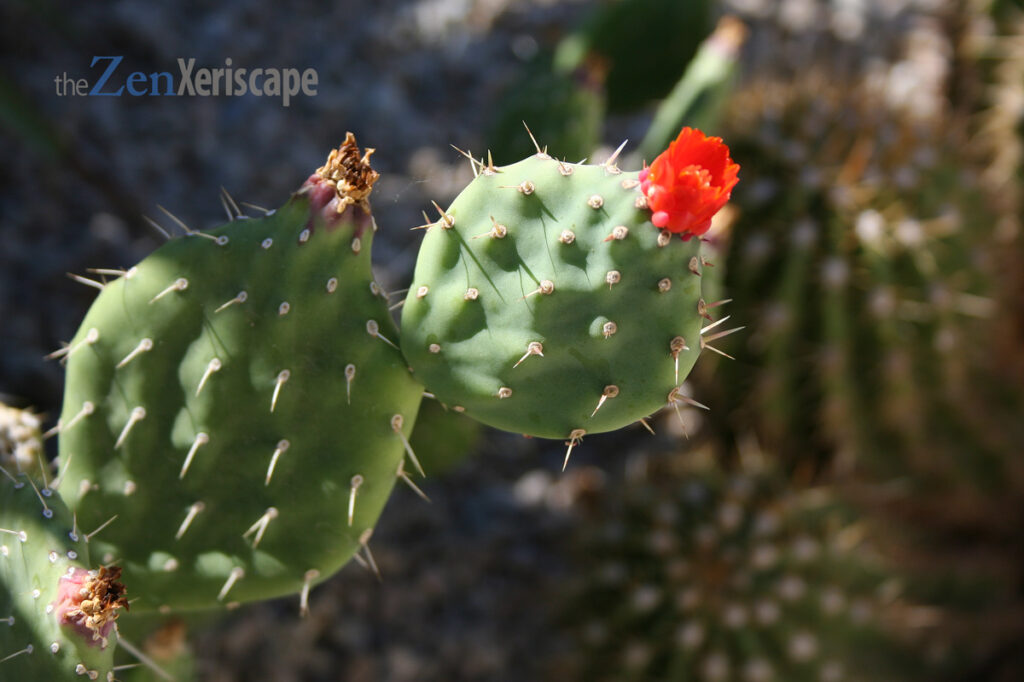
small pads and small, bright flowers,
works well in the landscape as well
as in containers.
Photo by Doug Martin
TAKEAWAYS:
How to grow Opuntia Johnson’s hybrid
If you’d like an easy-to-grow cactus that works in containers or in almost any sunny or not-so-sunny location in your landscape, try the Opuntia quitensis Johnson’s hybrid.
It is easy to grow, and produces beautifully small but vibrant cactus flowers.
Plant in a sunny location, with well-draining soil. Amend the soil if necessary. Water infrequently, and let the soil dry out completely in between waterings.
Buy tools for your garden! (As an Amazon Associate, I earn a commission from qualifying purchases.)
Photos and content by Doug Martin and The Zen Xeriscape


